A Rewilded Vacation
December 26, 2014
Is it still possible for American retirees to backpack — like they would have done as youngsters — around Europe for five weeks, have fun, learn a few things and…have fun? The answer for Lida and me at least, is a resounding “si !”
By David A. Burney
My wife and I set only one ground rule for a recent trip to the Netherlands, England, and Spain. We would explore ecotourism opportunities from the perspective of independent tourists who were traveling without a car. Our proverbial carbon footprint would be relatively light (for Americans) – using the most efficient public transport available, eating local foods, walking several kilometers per day, and not spending much money. Having fun all the while, of course.
Naturally, we had a list of things we wanted to learn more about: prehistoric cave art, new developments in conservation and ecotourism, and indigenous maritime cultures — restoration, rewilding, and cultural rebirth. These are the things we have emphasized in all our work, including the Makauwahi Cave Reserve on Kaua`i (www.cavereserve.org). Our increased leisure time, or intention to have more leisure time, in the last year or so has freed us to follow up on some favorite ideas, old and new.
We even managed to visit the only place in the world where an animal has gone extinct for a few years, then been – for a few minutes at least – brought back to life.
Ordesa y Monte Perdido National Park
High in the Pyrenees, those rugged lofty mountains separating Spain and France, Dr. Alberto Fernandez-Arias and his staff were “ground zero” for the compelling and controversial idea of de-extinction. First the park had the sad duty of losing the last remaining individual of the spectacular bucardo, or Pyrenean Ibex (Capra pyrenaica pyrenaica) back in 2000. Three years later, a group of scientists used the “Dolly the Sheep” cloning technique to produce a cross-fostered lamb from her frozen cells. The lamb, genetically identical to the last individual of an extinct subspecies, only lived for a few minutes. As Harvard geneticist George Church pointed out, the first airplane flight only lasted twelve seconds…
I first met Alberto a couple of years ago at the National Geographic Society, where he and I were participants along with other scientists in a symposium exercise organized by the LongNow Foundation. Later we met again, under the same sponsors, to record the TEDx de-extinction lectures http://tedxtalks.ted.com/video/The-First-De-extinction-Alberto.
In late October Lida and I were in Zaragoza, Spain, and gave Alberto a call. He offered to give us a personal tour of the National Park area next day (we were on our way up there anyway, planning to go by local buses). He was Director of the national park until a few years ago, now he is in charge of “all the hunting and fishing in Aragon,” as he put it. This wildlife veterinarian is also an accomplished wildlife artist. The effort he helped begin, to clone the remaining frozen cells of the last bucardo, continues in a biotech lab in Zaragoza that is collaborating with government wildlife officials.
Alberto drove us from the hotel in Zaragoza up into the mountains beyond Huesca. The Pyrenees loomed ever larger and more picturesque as we approached the park. “I’m going to show you some of the things you would have missed if you just came on the bus,” Alberto grinned as we wound up remote mountain roads with spectacular views in all directions. Along the way we stopped off near Ainsa at the “Eco Museo-Centro de Visitantes del Castillo de Aínsa (Huesca)” http://www.quebrantahuesos.org/htm/es/lafcq/donde-ainsa.htm, headquarters of the foundation that is spearheading the effort to save one of the world’s largest and rarest fliers, the Lammergeyer, Bearded Vulture, or Quebrantahuesos. We were greeted by the foundation Secretary, Oscar Diez. He explained that this gigantic raptor, a specialist feeder on bones of large (megafaunal) carcasses, is holding its own here in the steep remote ridges and canyons of the Pyrenees. Surplus individuals are being translocated to another place where they went extinct in the mid-20th century, the Picos de Europa of NW Spain, to create another population as a hedge against extinction. The European Ecological Network Natura 2000 aims to coordinate protection of the entire natural corridor of mountains stretching the 350 km (218 miles) between Picos de Europa and the Pyrenees, so that these only two populations surviving in Europe can eventually rejoin through this Iberian-Cantabrian Corridor. Again, Europe is leading the way in large-scale rewilding strategies. Brown bears, wolves, and that odd giant grouse, the Capercaille, also depend on this corridor.
We drove on into the mountains, visiting the remote, stone-clad village of Tella. Famed for its remote mountain hermitages, it was also hereabouts that a pre-Christian tradition of witchcraft has apparently persisted right through to the present. A megalithic dolmen, an ethnological museum of witchcraft, and a general feeling that Halloween lasts all year here pervades the place. Chimneys have ornate points, to keep witches from perching there on their nightly flights.
After Alberto stopped for a wonderful lunch of local fare at Lamiana, a friend’s remote restaurant , we were winding through the picturesque steep canyons leading into the heart of the Pyrenees. We ended up at Torla. This is the last village in the mountains before the track turns into tourist access, then trails, then steep climbing routes into the central peaks, of which Monte Perdido at 3355 m (about 11,000 feet) is one of the three tallest. As the sun went down over these great ragged limestone peaks, Alberto pointed to the high valley where the last bucardo died. I resolved to hike up there, and did a few days later.
A falling tree killed the last individual, a female called Celia. Her frozen cells waited over three years until the lab opportunity arose, then were cloned and viable embryos were implanted in hybrids between domestic goats and the surviving cousin of the bucardo, the Spanish Ibex. One made it to term, and produced a lamb with a defective lung. It died a few minutes later.
This humble beginning for “de-extinction” has led to a great deal of discussion about possibly bringing extinct species back from the dead. Of course, we all agree that it would be easier to save a species before it goes extinct, but many jewels in the biodiversity crown have been lost already, apparently forever—or so we thought. Suddenly, technology seems to be offering a way to see a mammoth, or something close, walk the earth again (see cover story, April 2013 National Geographic). That’s a big deal, regardless of how you feel about it. This story of Celia, the last bucardo, and her living cell line is an important part of the bigger story of de-extinction. Now, thanks to our visit with Alberto and his colleagues, Lida and I have a better feel for the courage it took to try this daring strategy, and the deep sense of loss that people in this part of northern Spain have for this handsome animal. The frozen cells are still there, and a government project to try and produce more “de-extincted” bucardos for reintroduction to the park in the future is still in the works. Local school children keep on drawing it, and a faint ray of hope for the bucardo shines on.
Communing with the Last Cave Artist
Earlier in October, Lida and I were in Cantabria, the north central part of Spain. We had gotten there via the Brittany Ferry service from Plymouth, England, to Santander, Spain. It’s a 20-hour big-ship cruise, off the Brittany coast of France. Once in Spain, we chose as our base of operations a village that comes as close to remaining in late Medieval times as one could in the modern world. Thanks to “zoning laws” that date back to the 16th century, Santillana del Mar has changed less than almost any place in Europe. Jean Paul Sartre called it “the most beautiful village in Spain.” Anyway, touristy or not, for us it was centrally located amid one of the greatest concentrations of Paleolithic cave art known anywhere. This region is on a par with some famous cave-art valleys of southern France. Lida and I had first visited the Dordogne region of France almost three decades ago to admire this most ancient form of human art, which depicts the European megafauna in exquisite drawings that have lasted tens of millennia.
We walked from Santilliana up to Altamira, knowing full well we couldn’t see the actual art (the cave is closed to protect the delicate paintings) — only the facsimile “Neocave.” Some of the greatest cave art sites of Europe are off-limits to the public now to protect the delicate cave environment and these art treasures. But Altamira was special, as one of the very first places where, in the 19th century, Paleolithic art was being recognized for what it was: the world’s first public exhibition of human creativity, thousands of years old. For us, the art is really special because it features large animals that are either extinct or very rare in Europe today. Some, like the horse, bison, and red deer (elk), are creatures now making a spectacular comeback in European rewilding projects. Some, like the aurochs or wild cow, are returning to the landscape through a de-extinction process of backcrossing old cattle breeds and selecting for the “wild” traits.
But it was the day we hiked from the bus stop in Puente Viesgo up to Monte Castillo that we felt closest to those artists of the late Pleistocene. This is a cone-shaped limestone mountain, absolutely riddled with caves. The most famous, the huge cavern of El Castillo, contains art that is some of the most ancient, perhaps done by the Neanderthals who occupied the cave before our own species. It contains art of virtually every named period over subsequent millennia, right up to some of the finest and perhaps latest Upper Magdalenian masterpieces, depicting aurochs, horses, ibex and deer. Twenty meters of sediment excavated at the cave entrance record 150,000 years of Neanderthal and subsequent modern human occupation, right up to the Middle Ages. Our tour was with a large, trilingual group, moving quickly, with no pictures allowed of course.
Afterwards, though, we had a chance to get a tour of Las Monedas, the other cave open for tours, of the four known art caves on the mountain. We were the only ones signed up for this tour, just Lida, me, and a guide who spoke excellent English. It’s a very old, highly draped cave, in the geological sense. Tens or perhaps hundreds of thousands of years of steady dripping has produced truly gigantic stalactites, stalagmites, and other cave dripstone features of dramatic appearance, on a par with caves anywhere. This apparently was not a cave that was visited much by Paleolithic people, although it was frequented by the extinct cave bears. The entrance is obscure now and was perhaps more so 12,000 years ago. At that time, perhaps only one artist, very late in the Paleolithic sequence, left some drawings here. They are very expertly done, in a consistent style of charcoal outlining often with an impressive economy of strokes to get the essence of the beast. He was perhaps one of the very last of these artists. Soon after 12,000 years ago, with changing postglacial climates, the advent of the Neolithic and the first evidence for agriculture, this mysterious practice of crawling into remote caves and leaving magnificent, realistic pictures of megafauna abruptly ceased. The big animals, and the European hunter-gatherer culture that followed them, were passing over the hill of time.
After a longish hike through the convoluted recesses of this magnificent cave, seeing no art, Lida and I at last came upon a human-decorated passage. It contains some of the most famous of all depictions of horses and reindeer, left by an artist of consummate skill and an economy of strokes. For this dark recess deep underground, we had electric lights, but the artist would have probably had only a small stone lamp, burning fat derived from ever-scarcer big animals. Perhaps nobody came back after him or her until some mysterious person many millennia later, in the fifteenth century, who left hobnailed boot tracks. These led to a deep pit, from which a bag of silver and copper coins from that period was extracted in the 20th century. The cave (and the coins that gave the cave its name) was re-discovered in 1952 by tree-planters. Nobody yet has figured out why the coins were tossed in.
Lida and I agreed, after the cave visit, that visiting Las Monedas was our consummate moment for somehow connecting with these ancient artists. In one’s mind’s eye, imagine about 12 millennia ago, an accomplished artist crawls into the recesses of a spectacular cave, wildly decorated with dripstone and with cave-bear bones on the floor, and draws by the light of a flickering stone lamp, perfect pictures of big animals that are perhaps disappearing from his world. Among them are two pictures of the ibex (Celia’s ancestors), and what is most likely a wolf. Images of a world that, 12,000 years ago, was passing.
Who Were these People?
Are there any vestiges of this early European culture, the indigenous people of the populous subcontinent we usually think of mainly as a source of colonizers of other lands? Perhaps merely by historical coincidence, near these caves there is an area of NE Spain and SW France where many Basque people speak Euskara, a language that has been spoken in this region longer, almost certainly, than the many other languages we associate with Europe. Before Asiatic peoples speaking Indo-European languages began invading Europe about 5,000 years ago, there were languages, of which Euskara is perhaps the sole survivor, spoken by the indigenous peoples of Europe. It’s what linguists call a “language isolate,” a language that doesn’t seem to fit neatly onto the family tree of existing languages anywhere.
These Basque people are noted for their early development of maritime skills, fishing the Bay of Biscay and much of the northeastern Atlantic in late Medieval times, and reaching the Grand Banks and North America around the time of Columbus. Lida and I spent some time in the heart of Basque country, in Bilbao, in order to learn more about these remarkable people.
Linguists have had long arguments over this unique tongue, which sounds nothing like the surrounding Romance languages or anything else European, except for vague connections to two other old languages, Finnish and Hungarian. The Basque writer and intellectual Miguel Unamuno, was among the first to point out that the Basque words for most common tools, including “knife,” “axe,” and “hoe” include the word for “stone,” implying that these language elements may date back to the Stone Age. While linguists argue about the details, the modern Basques are moving forward with a remarkable bilingual culture. Bilbao is a city famous for its modern architecture and museums such as the Guggenheim. Its twin museums of ethnology and archaeology, on opposite sides of the Plaza de Miguel Unamuno in Bilbao, give an overview of Basque culture. My favorite ancient artifact on display was the Mikeldi Idol, a great stone sculpture standing in the cloister. It’s some sort of large animal (the original description from the seventeenth century said it was a rhinoceros) draped over a huge perfectly circular object carved from the same stone. Of unknown age, it is almost certainly from pre-Roman times.
Through the centuries, the independent-minded Basques have earned a proud reputation as a highly skilled people of fishers, boatbuilders, shepherds, blacksmiths, potters, weavers, and more. For good books in English about them, written by an American Basque, check out author Robert Laxalt.
At Sea on the Bay of Biscay
These “Biskaian” people were much on my mind on the ship coming over from Plymouth, England (yep, the same one that has some steps that the American Pilgrims supposedly embarked from). Crossing the English Channel and the broad Bay of Biscay, I noted a chart on the wall of our ship, the Pont-Aven, showing the whales of the North Atlantic that one might see on such a voyage. Sadly, one of the most common whales when the Basques took to the sea with harpoons a millennium ago is no longer to be seen on this route, nor anywhere in the Atlantic. Genetic studies of the bones saved in museums from early whaling days show that the “extinct” Atlantic Gray Whale is the same whale as the living “Pacific” Gray, that has made such a remarkable comeback with protection in recent decades off the western coast of North America. I suggested in an article over a decade ago that some should be captured, towed through the Panama Canal, and released in the Atlantic. I still think that should be discussed, and like many ideas once dismissed, its time may come – a spectacular rewilding, ocean-wide.
To get to England in the first place, we traveled under the water. That’s right, the “Chunnel.” We boarded a magnificent high-speed Eurostar train in Brussels, and came out of a long, dark tunnel under the English Channel near Dover. As is the norm in Europe these days, we were able to connect directly between the various train lines (using the London Metro), and were soon on our way to Salisbury, the home of one of the greatest and oldest cathedrals, but also that “cathedral” of still more ancient times, Stonehenge. Much has been written about the improved interpretive facilities at the “’Henge,” and we wanted to see for ourselves. Indeed, it is fabulously well-done (and easily reached from Salisbury by bus, which also stops at the ancient hilltop ruins of the Medieval castle of Old Sarum, another good romp through ancient history). We especially liked the addition at Stonehenge of the reconstructed Neolithic village, complete with ethnobotanical demonstrations and a view into the lives of the people in the period when the builders were starting to drag big rocks around. But what we especially wanted to hear more about was the Great Bustards.
That’s right, huge ground birds that were hunted to extinction in 19th century Britain, but have held on in remote places from Russia to northern Spain. The Royal Society for the Protection of Birds and the Great Bustard Group ( www.greatbustard.org ) have a project on the Salisbury Plain, near Stonehenge, to reintroduce the Great B. First they used individuals from a migratory Russian population. As one might expect, these birds were prone to fly south in winter! So experts then tried a more subtle technique, hatching eggs of the Spanish birds (Spanish bustards don’t migrate, they are resident year-round). These birds are now being used for the reintroduction, with better success. The project has a long way to go, and is still dealing with discussions regarding which genetic stocks and methods to use as with many reintroductions.
While we were out in southern England, enjoying eating, sleeping, and drinking in places with overhead timbers up to 1000 years old or more, we thought we should go have a look at another type of restoration effort, the much-talked-about Eden Project in Cornwall. Situated in abandoned clay pits, this mammoth project has built from scratch an elaborate theme-park devoted to the proposition that plants can be interesting and entertaining. It’s a government-nonprofit collaborative project that has cost over £120 million. We spent a Friday there, a balmy day (for SW England), admiring their biospheric domes. We especially liked the one devoted to the Mediterranean theme and the origins of agriculture in that flora. Sadly, it seemed there were more employees than visitors that day, but I imagine things pick up on the weekends during the fall.
Second Pilgrimage to that Unpronounceable Place
When it comes to rewilding at larger scales, nothing anywhere comes to mind more readily than a place with a name only Dutch people could pronounce, the Oostvaardersplassen. Much has been written about this place by Franz Vera, Emma Mariss, and a host of other journalists and scientists, including me ( http://cavereserve.org/blog/?p=588#more-588 ). Last fall I was there in connection with a visit to Holland for meetings with members of the True Nature Foundation. So I had a V.I.P. tour with Hans Breveld, one of the key wildlife biologists working at this remarkable example of restoration. There were many tourists around, but I was “behind the scenes” and really couldn’t quite picture what their experience of this unusual place was like.
The place has a unique history, starting as an abandoned swamp-drainage scheme. It rapidly became a refuge for more than 100,000 migrating geese, rare raptors, and a controversial but by many standards astoundingly successful, restoration of a large herbivore system modeled after late prehistoric Europe. There is an excellent short film (with English subtitles) on the place, De nieuwe wildernis, and a book in English with magnificent photography (Oostvaardersplassen: New Nature below Sealevel, by Vincent Wigbels). A question I wanted to evaluate, something for Lida and me to tackle on this trip, is what does this experience add up to from the perspective of an international tourist? And more specifically, can foreigners just show up here, and, using the fantastic public-transport, cycling, and hiking network so complete everywhere we’ve been in the Netherlands, have a low-carbon-footprint sort of holiday that is really fun? And doesn’t cost a bundle, I should add.
We had been traveling around Holland for more than a week by this time, lecturing at Utrecht University, visiting with Dutch colleagues such as Dr. Erik de Boer, a paleoecologist, and catching up on the activities of the True Nature Foundation. As I wrote in a recent bit for the Makauwahi Cave Reserve newsletter http://cavereserve.org/blog/?p=659#more-659 , we had an interesting time visiting with Henri Kirkdijk-Otten and Guido Beauchez at the Planken Wambuis Reserve, to see the restoration work being done there by…cows! Old cattle breeds thought to contain important genes for reconstituting the extinct wild aurochs are being tended here by Peter van Geneijgen. Along with the feral horse breed from the New Forest area of Britain, these livestock fill in for the extinct herbivores in helping control invasive weeds and favoring native grasses and forbs.
So near the end of our sojourn in the Netherlands, Lida and I took the train from Rotterdam, where we had been staying in this vast harbor on a “boat and breakfast” – a restored century-old ship offering b & b accommodations – up to Lelystad in the NW corner of the country. As the train drew near the town, passing through a lonely stretch of marshlands, we were suddenly flashed back to the times in Africa almost 40 years ago that we used to take the train from Nairobi to Mombasa, through herds of zebras and antelopes. But we were in Holland, one of the most densely populated and industrialized countries in Europe. Standing around as the train passed were wild herds of several hundred prehistoric-looking Konik horses, believed to be ancestors of the extinct tarpan of Europe, with faint stripes on the backs of their legs.
We stayed at the Hotel Lange Jammer near the yacht harbor, an easy walk from the harbor bus stop. Our intent was to rent bikes (easily done anywhere in Holland) and ride out to the “Oost.” But the owner’s husband insisted on giving us a ride, saying we would have more time to walk around inside that way. So he dropped us there, we hiked all over the reserve, and then walked back to town along the excellent trail system that perches atop the dikes that run everywhere in this low country.
At the end of the five-week trip, Lida and I “voted” independently, regarding which thing we did on the entire trip that was by our personal standard the “coolest.” This day was it for both of us. Once again, like the times when we lived in the Masai Mara Reserve in the late 1970’s and studied cheetahs, we felt that certain special uplift that comes with being out on the savanna with big animals. Signs warn the many visitors hiking through not to approach the animals closer than 25 meters. We obeyed the rules, and indeed the red deer, wild cattle, and thousands of migrating geese of three species did keep their distance. But we paused some distance from a big herd of the wild horses, and they eventually came to us, sauntering by, eating, bickering, suckling foals, and generally ignoring us.
At the lovely raised observatory at the end of a day-long loop hike, we were impressed with the extent to which Europeans take their birding seriously. Although these big animals were all around, many visitors were exclaiming in let’s see…Dutch, German, French, Italian, English…about the various species of geese, raptors, wading birds, even “little brown jobs” as sparrows, warblers, wrens and such fare are sometimes lumped. The view from here, and various hides and viewpoints accessible on foot around the reserve (and some by bicycle or even that increasingly rare conveyance in Holland, the private car), are absolutely stunning, as the large herbivores trim back the encroaching brush, and the geese do their job mowing the marsh edges and fertilizing everything to that bright green that comes from rapid nitrogen cycling and constant plant biomass turnover, to put it ecologically. The air, ground, and water teemed with diverse life. Nature’s barnyard.
What Did We Learn on Vacation?
I have always believed that travel is one of the most effective educational tools. It certainly has worked that way for me. And as I approach 65, I am still learning lots. Here are some generalities from our recent trip:
1) Restoration of any type makes a place or a thing or a historical event more interesting for visitors of all sorts. This idea of rewilding, in whatever form, represents above all a direction, not a destination, and this intention to restore gives a place and its caretakers a more positive purpose than just protecting nature from humans, and vice versa, as important as that is.
2) Europe has a lot to teach the rest of the world about interpretation of natural and historical features. Visitor information is generally high-quality, on a par with anything generated by the U.S. National Park Service, almost everywhere I’ve been in Europe in the last few years. They are advanced, but perhaps they have also led in making all the necessary mistakes along the way. For instance, nature tourism and historical tourism are a huge business in many parts of Western Europe, and sometimes good places can become unpleasantly crowded during the high tourist season (we prefer to travel in Europe in the fall, after the rush). Increasingly, parks are adopting no-car policies, providing shuttles or even restricting areas to foot or paddle access only. In some situations, visitor centers have become highly automated, sometimes with working displays and sometimes “temporarily out of order.” There is no substitute for a real person in relating visitor information, European facilities have discovered over and over. Ideally this person, who forever after becomes the face of the place for thousands of visitors, is courteous, engaging, and personally interested in the site.
3) Visitors are there for entertainment but also appreciate relevancy to their own lives. Museums, parks, and historical sites everywhere are being affected by global changes, as are all visitors. It is important to address energy, climate change, and biodiversity loss issues by local example and message, all the while avoiding the “preachy” quality we encountered in a few places. If a park conserves energy in its operations and has proactive programs to deal with climate change and biodiversity loss, and shares these programs with the public, that says more than any amount of environmental sermonizing.
4) All conservation projects benefit from historical tie-ins; all historical features invite a conservation opportunity. Lida and I like to think that Makauwahi Cave Reserve on Kaua`i has played a positive role in developing and promoting these paired concepts.
Finally, I guess what anybody still reading really wants to know: is it possible for an elderly couple to travel around Europe with a very light footprint, specifically no car? Yes, absolutely proved now. And it was fun, from one end to the other. Starting in Amsterdam, traveling all over Holland, exploring the antiquities and natural features of southern England and northern Spain, right out to the last night in Madrid, at a famous Flamenco club, it was all fun.
We never risked getting stranded until we got back to the small airport in New Bern, North Carolina. Fifty miles from home, 11 in the evening, our friends Barbara Garrity-Blake and Margery Meisenheimer picked us up by car for the last leg of our long journey. They are good neighbors and reliable folks, but if they had failed to show up for whatever reason, there is no public transport we could have taken, short of bribing a cab, if we could find one, to drive to the next county in the middle of the night. No similar dilemma ever arose in five weeks of foreign travel. That’s a sobering thought for Americans, or should be.
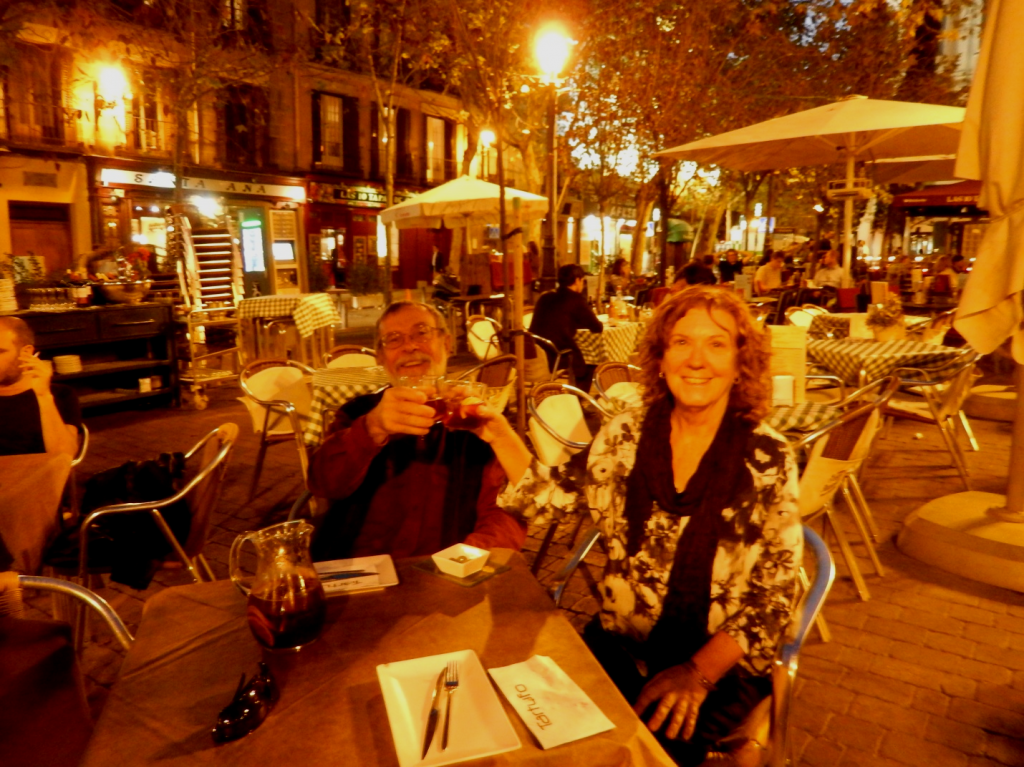
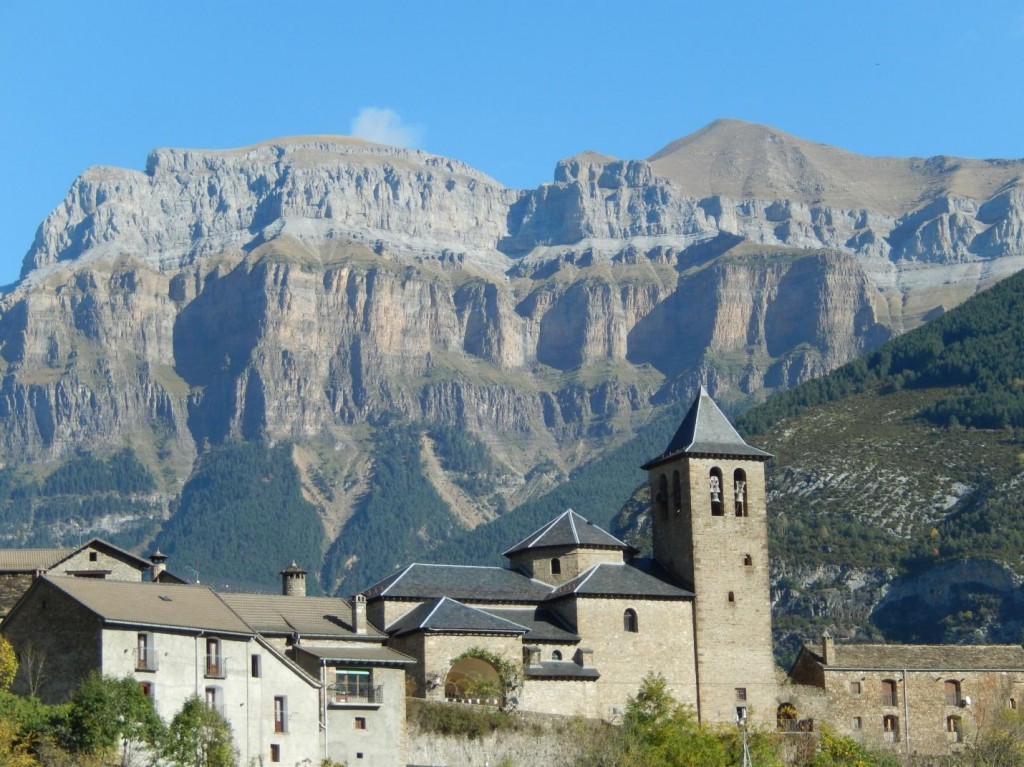

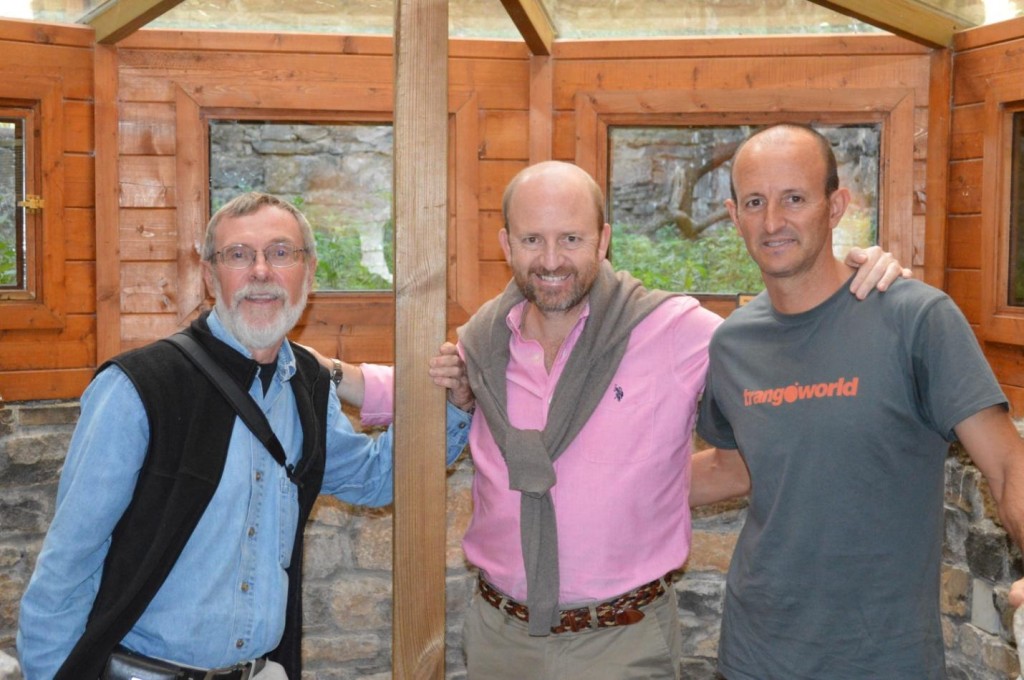
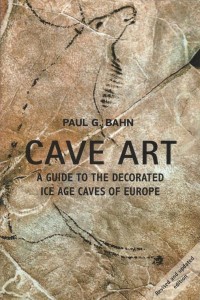
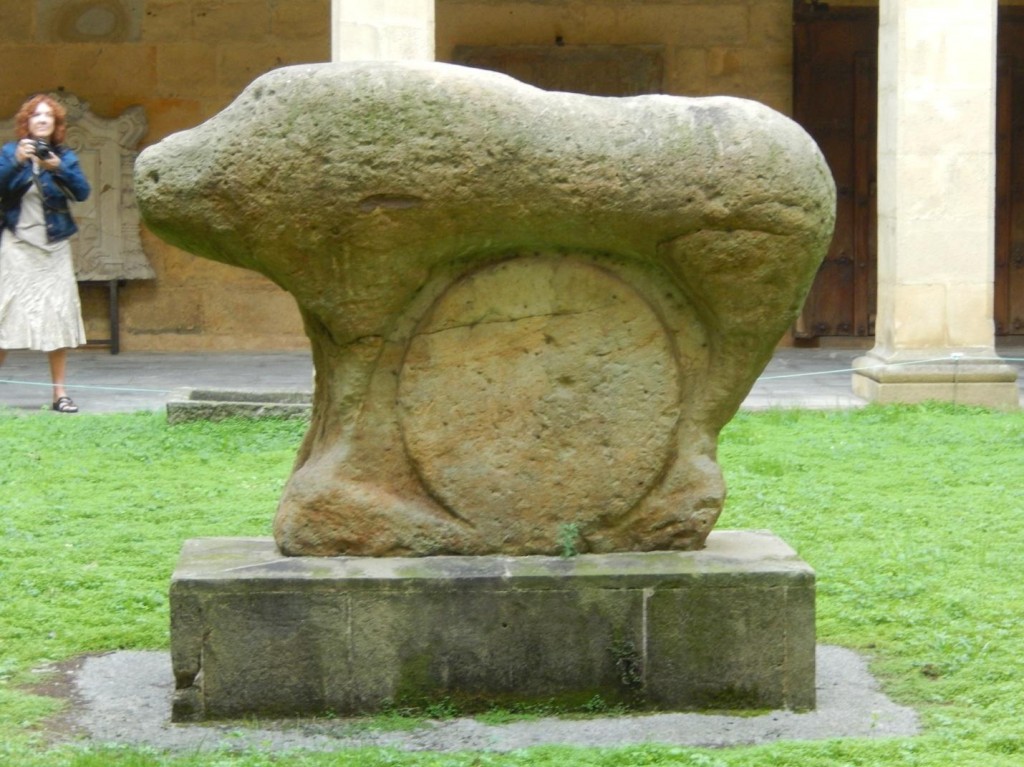
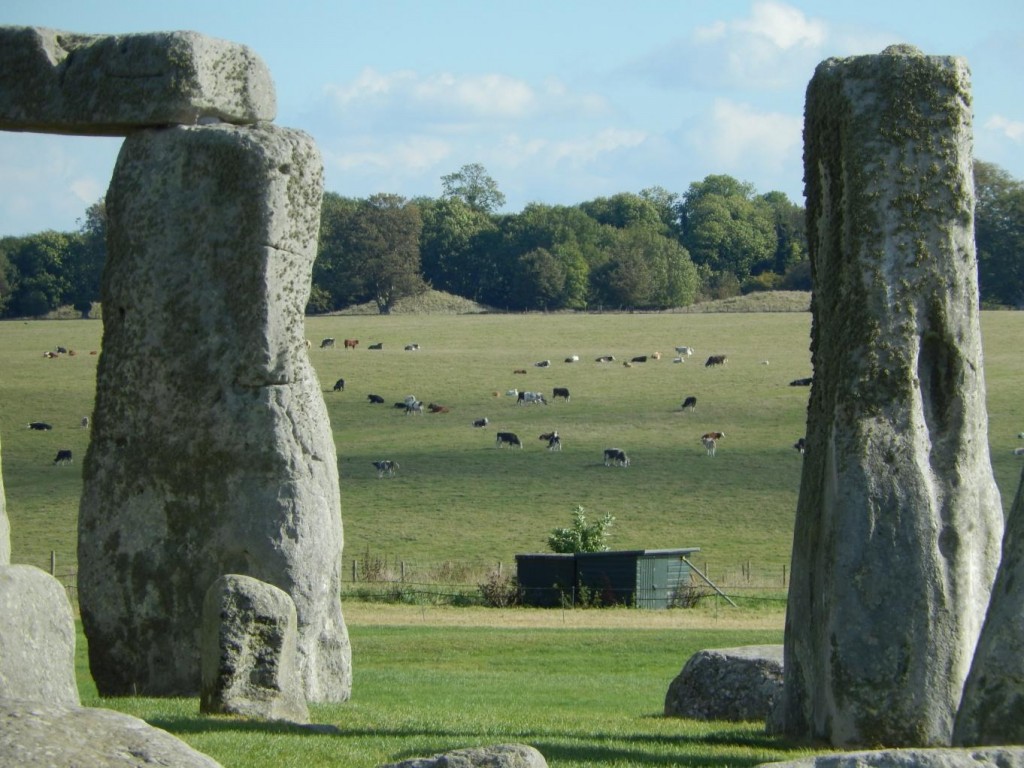
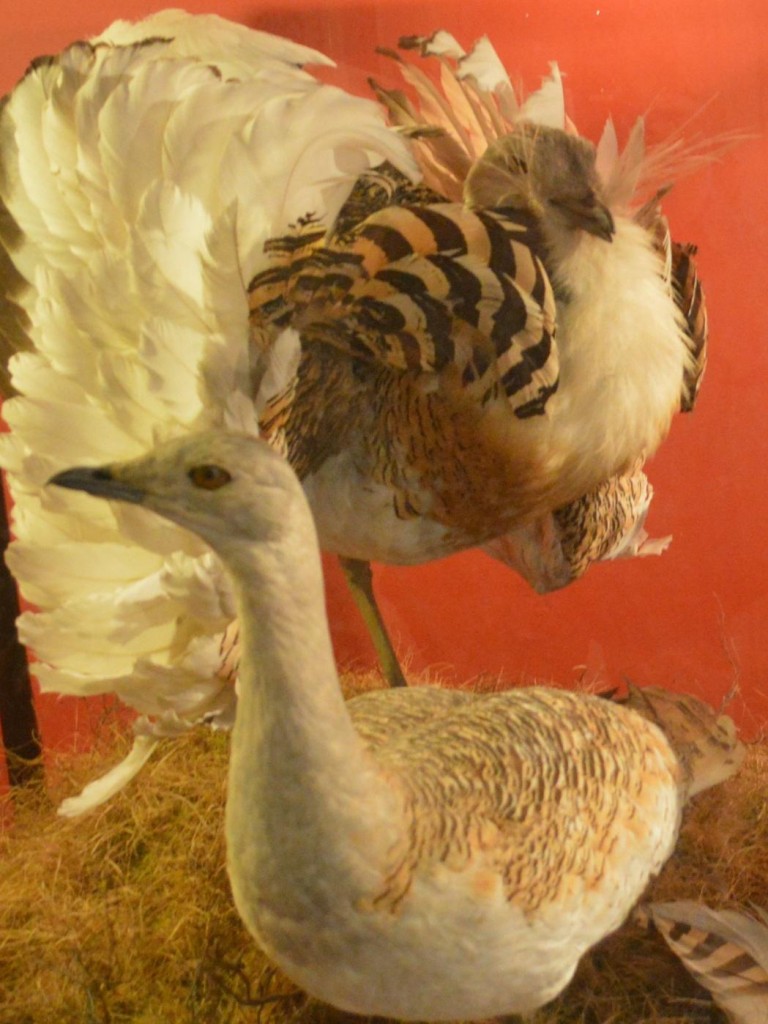
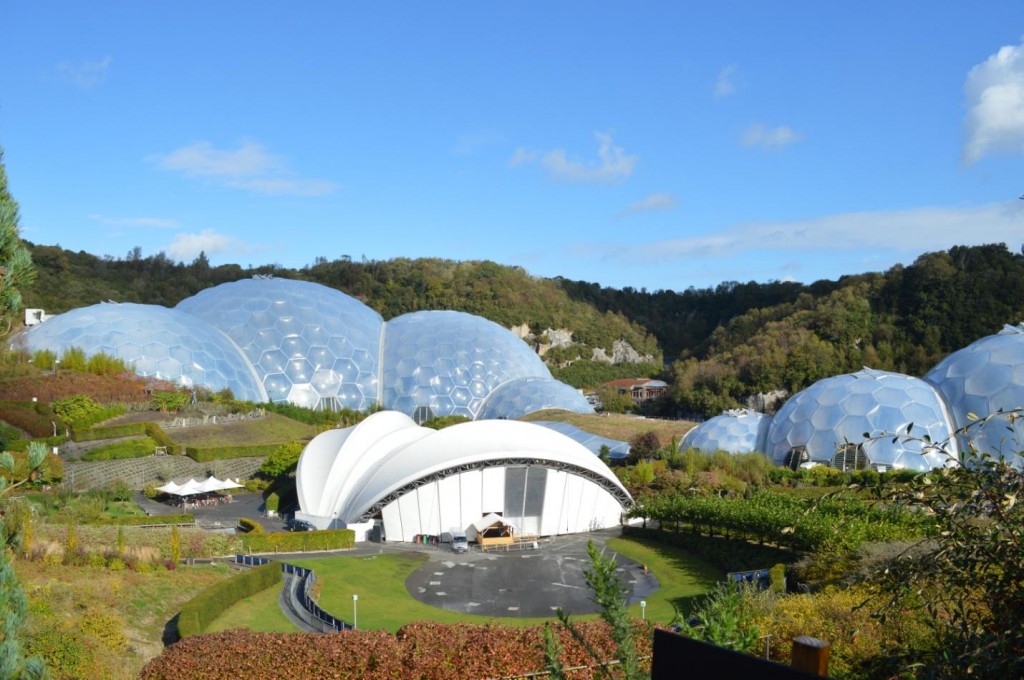
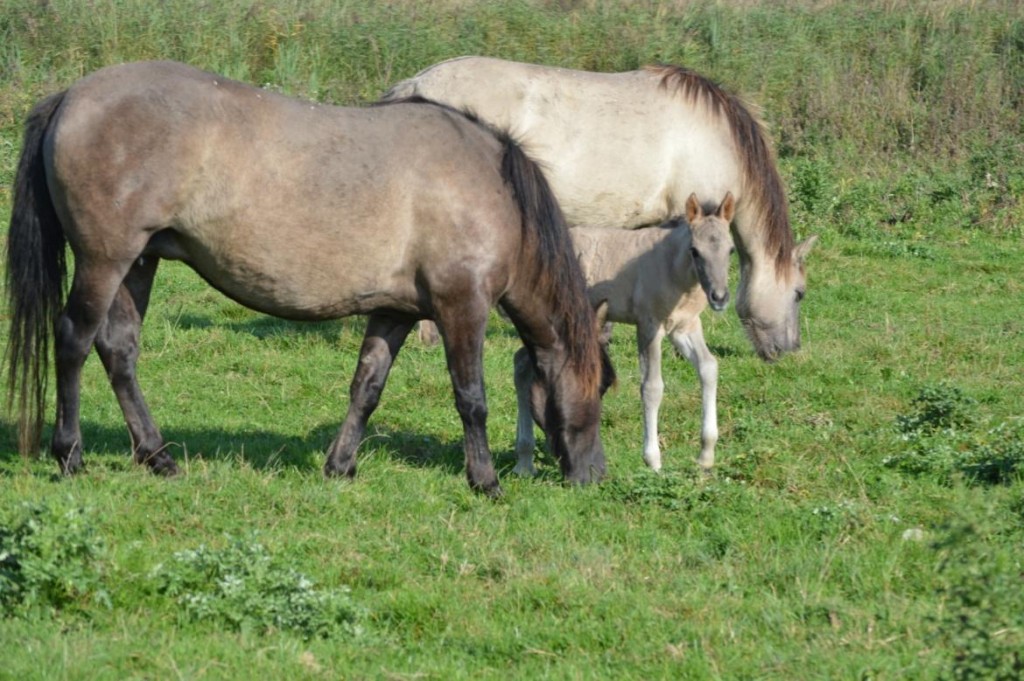
Comments:
Ryan Phelan on January 7, 2015
David and Lida-- what an inspiring trip at so many levels! Thank you for sharing all the details and making it look so easily doable. I have no excuse not to just go pack my bags! I love your lessons learned. Especially "This idea of rewilding, in whatever form, represents above all a direction, not a destination..." Thank you for al the work that you do!
Alberto Fernández-Arias on December 30, 2014
Hi David, You have written a wonderful and excellent review of a very nice trip. I enjoyed very much visiting the National Park of Ordesa and Monte Perdido at the Pyrenees with Lida and you. Best regards and good luck with all your projects. Alberto Fernández-Arias